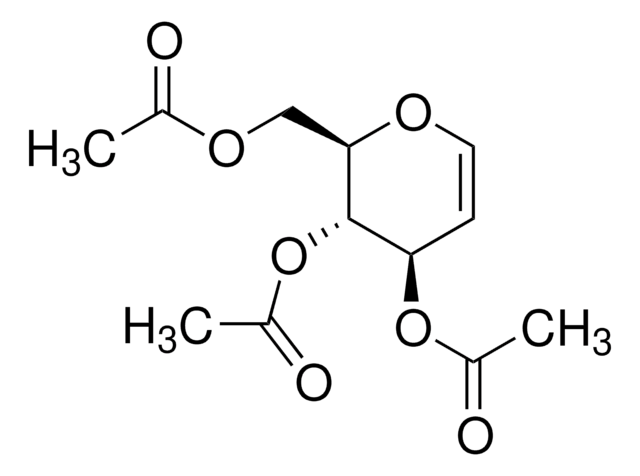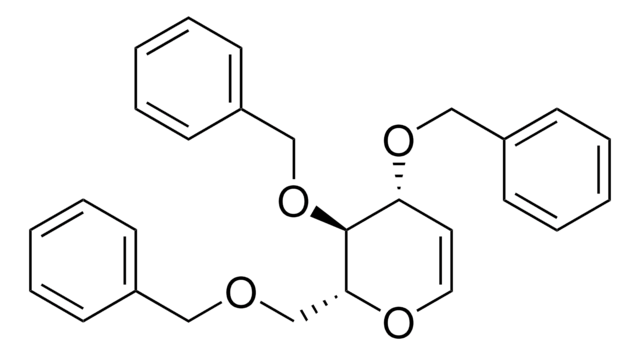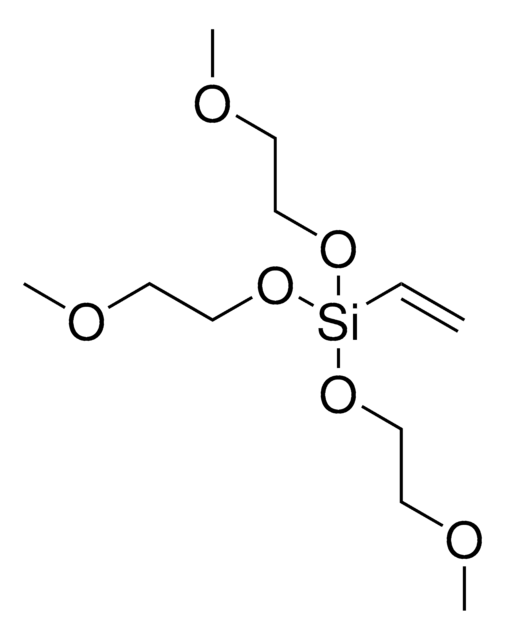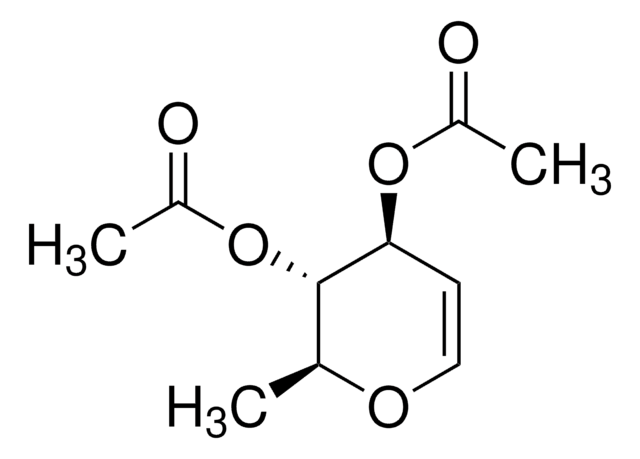Alle Fotos(2)
Wichtige Dokumente
464058
D-Glucal
96%
Synonym(e):
1,5-Anhydro-2-deoxy-D-arabino-hex-1-enitol
Anmeldenzur Ansicht organisationsspezifischer und vertraglich vereinbarter Preise
Alle Fotos(2)
About This Item
Empirische Formel (Hill-System):
C6H10O4
CAS-Nummer:
Molekulargewicht:
146.14
EG-Nummer:
MDL-Nummer:
UNSPSC-Code:
12352201
PubChem Substanz-ID:
NACRES:
NA.22
Empfohlene Produkte
Qualitätsniveau
Assay
96%
Form
solid
Optische Aktivität
[α]21/D −7°, c = 1.9 in H2O
Verunreinigungen
<1% methyl alcohol
mp (Schmelzpunkt)
58-60 °C (lit.)
Lagertemp.
2-8°C
SMILES String
OC[C@H]1OC=C[C@@H](O)[C@@H]1O
InChI
1S/C6H10O4/c7-3-5-6(9)4(8)1-2-10-5/h1-2,4-9H,3H2/t4-,5-,6+/m1/s1
InChIKey
YVECGMZCTULTIS-PBXRRBTRSA-N
Verwandte Kategorien
Anwendung
Important building block for both solution- and solid-phase synthesis of oligosaccharides.
Signalwort
Warning
H-Sätze
Gefahreneinstufungen
Eye Irrit. 2 - Skin Irrit. 2 - STOT SE 3
Zielorgane
Respiratory system
Lagerklassenschlüssel
11 - Combustible Solids
WGK
WGK 3
Flammpunkt (°F)
Not applicable
Flammpunkt (°C)
Not applicable
Hier finden Sie alle aktuellen Versionen:
Besitzen Sie dieses Produkt bereits?
In der Dokumentenbibliothek finden Sie die Dokumentation zu den Produkten, die Sie kürzlich erworben haben.
Russell J Hewitt et al.
Chemical communications (Cambridge, England), 47(1), 421-423 (2010-09-21)
gem-Dibromocyclopropane 1, prepared from tri-O-benzyl-D-glucal, undergoes thermal and silver-promoted ring expansion in the presence of alcohols to give substituted oxepines. With further heating, ring contraction to highly substituted tetrahydrofurans follows. These represent C-furanosides, potentially useful as precursors to C-nucleosides and
Patricia Wildberger et al.
Carbohydrate research, 356, 224-232 (2012-05-18)
Cellobiose phosphorylase from Cellulomonas uda (CuCPase) is shown to utilize D-glucal as slow alternative donor substrate for stereospecific glycosyl transfer to inorganic phosphate, giving 2-deoxy-α-D-glucose 1-phosphate as the product. When performed in D(2)O, enzymatic phosphorolysis of D-glucal proceeds with incorporation
H W Klein et al.
Biochemistry, 21(26), 6675-6684 (1982-12-21)
D-Glucal, containing a highly reactive double bond, can replace glucose 1-phosphate as the glucosyl donor in phosphorylase-catalyzed glucosyl transfer to a suitable oligo- or polysaccharide acceptor: D-glucal + Pi + (glucose)Pi leads to n 2-deoxy-alpha-D-glucosyl(glucose)n in equilibrium 2-deoxy-alpha-D-glucose-1-P + (glucose)n.
S Chiba et al.
Biochemistry, 27(5), 1464-1469 (1988-03-08)
Alpha-Glucosidases from Aspergillus niger, pig serum, ungerminated rice, buckwheat, and sugar beet seeds (but not from brewers' yeast or honeybee) were found to catalyze the hydration of D-glucal. Each reactive alpha-glucosidase, incubated with D-glucal in D2O, was shown to protonate
Qi Chen et al.
Carbohydrate research, 342(11), 1405-1411 (2007-05-23)
A total synthesis of the 12-membered ring natural macrolide, sporiolide B, was achieved from D-glucal in 17 steps with 4.8% overall yield. The required stereochemical configuration at C-3 and C-5 in sporiolide B was easily introduced by applying a Mitsunobu
Unser Team von Wissenschaftlern verfügt über Erfahrung in allen Forschungsbereichen einschließlich Life Science, Materialwissenschaften, chemischer Synthese, Chromatographie, Analytik und vielen mehr..
Setzen Sie sich mit dem technischen Dienst in Verbindung.








